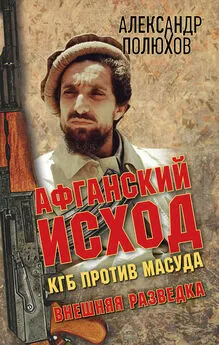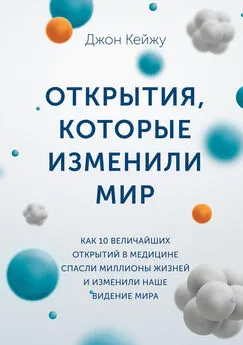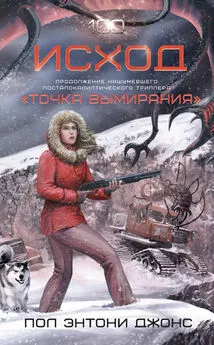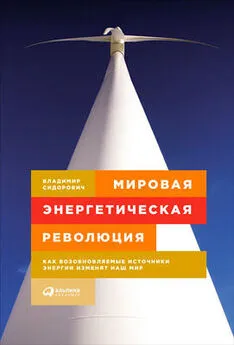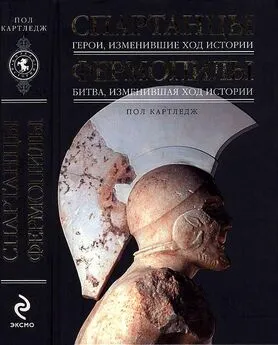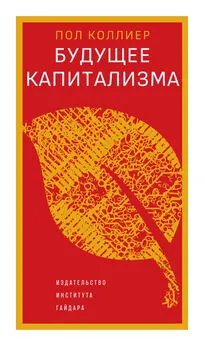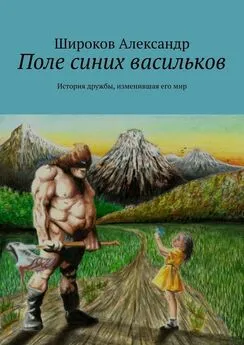Пол Коллиер - Исход. Как миграция изменяет наш мир
- Название:Исход. Как миграция изменяет наш мир
- Автор:
- Жанр:
- Издательство:Изд-во Института Гайдара
- Год:2017
- ISBN:978-5-93255-452-4
- Рейтинг:
- Избранное:Добавить в избранное
-
Отзывы:
-
Ваша оценка:
Пол Коллиер - Исход. Как миграция изменяет наш мир краткое содержание
Исход. Как миграция изменяет наш мир - читать онлайн бесплатно ознакомительный отрывок
Интервал:
Закладка:
Gaechter, S., Herrmann, B., and Thöni, G. 2010. Culture and Cooperation. CESifo Working Paper Series 3070, CESifo Group Munich.
Glaeser, E. L. 2011. Triumph of the City: How Our Greatest Invention Makes Us Richer, Smarter, Greener, Healthier and Happier. New York: Penguin.
Goldin, I., Cameron, G., and Balarajan, M. 2011. Exceptional People: How Migration Shaped Our World and Will Define Our Future. Princeton, NJ: Princeton University Press.
Goodhart, D. 2013. White Flight? Britain’s New Problem — Segregation. Prospect, February.
Greif, A., and Bates, R. H. 1995. Organising Violence: Wealth, Power, and Limited Government. Mimeo, Stanford University.
Grosjean, F. 2011. Life as a Bilingual. Psychology Today .
Haidt, J. 2012. The Righteous Mind: Why Good People Are Divided by Politics and Religion. New York: Pantheon.
Halsall, G. 2013. Worlds ofArthur. New York: Oxford University Press. Hatton, T.J., and Williamson, J. G. 2008. Global Migration and the World Economy: Two Centuries of Policy and Performance. Cambridge, MA: MIT Press.
Heath, A. F., Fisher, S. D., Sanders, D., and Sobolewska, M. 2011. Ethnic Heterogeneity in the Social Bases of Voting in the 2010 British General Election. Journal of Elections, Public Opinion and Parties 21(2), 255–277.
Herreros, F., and Criado, H. 2009. Social Trust, Social Capital and Perceptions of Immigrations. Political Studies 57, 335–357.
Hirsch, F. 1977. Social Limits to Growth. New York: Routledge.
Hirschman, A. O. 1990. Exit, Voice and Loyalty: Responses to Decline in Firms, Organizations, and States. 2nd ed. Cambridge, MA: Harvard University Press.
Hirschman, C. 2005. Immigration and the American Century. Demography 42, 595–620.
Hoddinott, J. 1994. A Model of Migration and Remittances Applied to Western Kenya. Oxford Economic Papers 46(3), 459–476.
Hofstede, G., and Hofstede, G. J. 2010. National Culture Dimensions. Доступно по адресу: http://geert-hofstede.com/national-culture.html.
Hurley, S., and Carter, N., eds. 2005. Perspectives on Imitation: From Neuroscience to Social Science. Vol. 2. Cambridge, MA: MIT Press.
Jones, B. F., and Olken, B. A. 2005. Do Leaders Matter? National Leadership and Growth Since World War II. Quarterly Journal of Economics 120(3), 835–864.
Kay, J. 2012. The Multiplier Effect, or Keynes’s View of Probability. Financial Times, August 14. Доступно по адресу: http:// www.ft.com/cms/s/0/f7660898-e538–11e1–8ac0–00144fea-b49a.html.
Kepel, G. 2011. Banlieues Islam: L’enquete qui derange. Le Monde , October 5.
Koczan, Z. 2013. Does Identity Matter? Mimeo, University of Cambridge.
Koopmans, R. 2010. Trade-offs between Equality and Difference: Immigrant Integration, Multiculturalism and the Welfare State in Cross-National Perspective. Journal of Ethnic and Migration Studies 36(1), 1–26.
Mahmoud, O., Rapoport, H., Steinmayr, A., and Trebesch, C. 2012. Emigration and Political Change. Mimeo.
Marchiori, L., Shen, I.-L., and Docquier, F. 2013. Brain Drain in Globalization: A General Equilibrium Analysis from the Sending Countries’ Perspective. Economic Inquiry 51(2), 1582–1602.
McKenzie, D., and Yang, D. 2010. Experimental Approaches in Migration Studies. Policy Research Working Paper Series 5395, World Bank.
Mercier, M. 2012. The Return of the Prodigy Son: Do Return Migrants Make Better Leaders? Mimeo, Paris School of Economics.
Miguel, E., and Gugerty, M. K. 2005. Ethnic Diversity, Social Sanctions, and Public Goods in Kenya. Journal of Public Economics 89(11–12), 2325–2368.
Montalvo, J., and Reynal-Querol, M. 2010. Ethnic Polarization and the Duration of Civil Wars. Economics of Governance 11(2), 123–143.
Mousy, L. M., and Arcand, J.-L. 2011. Braving the Waves: The Economics of Clandestine Migration from Africa. CERDI Working Paper 201104.
Murray, C. 2012. Coming Apart: The State of White America, 1960–2010 . New York: Crown Forum.
Nickell, S. 2009. Migration Watch. Prospect Magazine, July 23. Доступно по адресу: http://www.prospectmagazine.co.uk/ magazine/10959-numbercruncher/.
Nunn, N. 2010. Religious Conversion in Colonial Africa. American Economic Review 100(2), 147–152.
Nunn, N., and Wantchekon, L. 2011. The Slave Trade and the Origins of Mistrust in Africa. American Economic Review 101(7), 3221–3252.
Pagel, M. D. 2012. Wiredfor Culture: The Natural History of Human Cooperation . London: Allen Lane.
Pérez-Armendariz, C., and Crow, D. 2010. Do Migrants Remit Democracy? International Migration, Political Beliefs, and Behavior in Mexico. Comparative Political Studies 43(1), 119–148.
Pinker, S. 2011. The Better Angels of Our Nature. New York: Viking.
Putnam, R. 2007. E Pluribus Unum: Diversity and Community in the 21st Century. Scandinavian Political Studies 30(2), 137–174.
Rempel, H., and Lobdell, R. A. 1978. The Role of Urban-to-Rural Remittances in Rural Development. Journal of Development Studies 14(3), 324–341.
Romer, P. 2010. For Richer, for Poorer. Prospect Magazine, January 27. Доступно по адресу: http://www.prospectmagazine.co.uk/ magazine/for-richerfor-poorer/.
Sampson, R.J. 2008. Rethinking Crime and Immigration. Contexts 7(1), 28–33.
Sandel, M.J. 2012. What Money Can’t Buy: The Moral Limits of Markets . London: Allen Lane.
Saunders, D. 2010. Arrival City: How the Largest Migration in History Is Reshaping Our World. New York: Pantheon.
Serra, D., Serneels, P., and Barr, A. 2010. Intrinsic Motivations and the Non-profit Health Sector: Evidence from Ethiopia. Working Paper Series, University of East Anglia, Centre for Behavioural and Experimental Social Science (CBESS) 10–01.
Schiff, M. 2012. Education Policy, Brain Drain and Heterogeneous Ability: The Impact of Alternative Migration Policies. Mimeo, World Bank.
Shih, M., Pittinsky, T. L., and Ambady, N. 1999. Stereotype Susceptibility: Shifts in Quantitative Performance from Socio-cultural Identification. Psychological Science 10, 81–84.
Spilimbergo, A. 2009. Democracy and Foreign Education. American Economic Review 99(1), 528–543.
Stillman, S., Gibson, J., McKenzie, D., and Rohorua, H. 2012. Miserable Migrants? Natural Experiment Evidence on International Migration and Objective and Subjective Well-Being. IZA-DP6871, Bonn, September.
Thurow, R. 2012. The Last Hunger Season: A Year in an African Farm Community on the Brink of Change. New York: Public Affairs.
Van Tubergen, F. 2004. The Integration ofImmigrants in Cross-National Perspective: Origin, Destination, and Community Effects. Utrecht: ICS.
Walmsley, T. L., Winters, L. A., Ahmed, S. A., and Parsons, C. R. 2005. Measuring the Impact of the Movement of Labour Using a Model of Bilateral Migration Flows. Mimeo.
Weiner, M. S. 2011. The Rule of the Clan. New York: Farrar, Straus and Giroux.
Wente, M. 2012. Michael Ignatieff Was Right about Quebec. The Globe and Mail, April 26. http://www.theglobeandmail.com/ commentary/michael-ignatieff-was-right-about-quebec/article4102623/.
Wilson, W.J. 1996. When Work Disappears: The New World of the Urban Poor. New York: Alfred A. Knopf.
Wrong, M. 2006. I Didn’t Do Itfor You. New York: Harper Perennial. Yang, D. 2008. International Migration, Remittances and Household Investment: Evidence from Philippine Migrants’ Exchange Rate Shocks. Economic Journal 118(528), 591–630.
Yang, D. 2011. Migrant Remittances. Journal of Economic Perspectives 25(3), 129–152.
Yang, D., and Choi, H. 2007. Are Remittances Insurance? Evidence from Rainfall Shocks in the Philippines. World Bank Economic Review 21(2), 219–248.
Zak, P. 2012. The Moral Molecule: The Source of Love and Prosperity . New York: Dutton Adult.
Примечания
1
Haidt (2012).
2
Benabou and Tirole (2011).
3
Wente (2012).
4
Dustmann et al. (2003).
5
Besley and Persson (2011); Acemoglu and Robinson (2012).
6
Jones and Olken (2005).
7
Kay (2012).
8
В блестящем новом исследовании Тимоти Бесли и Марта Рейнал-Квероль (Besley and Reynal-Querol 2012) показывают, что в Африке причиной современных кровавых конфликтов может служить даже память о конфликтах, происходивших в XV веке.
9
Greif and Bates (1995).
10
Pinker (2011).
11
Akerlof and Kranton (2011).
12
Beatty and Pritchett (2012).
13
Beine et al. (2011).
14
Carrington et al. (1996).
15
Число людей, с которыми каждый из нас способен поддерживать осмысленные отношения, не превышает 150. Эта величина известна как постоянная Данбара (Dunbar 1992).
16
Например, в особенно тщательном исследовании турецкой и сербской диаспор в Германии (Koszan 2013) показывается, что чем выше в классе доля детей из диаспоры, тем больше вероятность того, что у ребенка из диаспоры разовьется ярко выраженное чувство принадлежности к ней.
17
Точка, в которой пересекаются две оси графика, считается началом отсчета.
18
Чтобы убедиться в этом, предположим на секунду, что темп абсорбции не зависит от величины диаспоры: например, ежегодно из диаспоры в основное общество переходит 2 % ее членов, вне зависимости от ее размера. В таком случае удвоение диаспоры приведет к тому, что число людей, абсорбируемых основным обществом, тоже удвоится. При удвоении числа людей, покидающих диаспору, удвоится число мест для новых мигрантов: таким образом, удвоение диаспоры приведет к удвоению темпа миграции, при котором размер диаспоры не меняется. Кривая диаспоры будет выглядеть как прямая линия, выходящая из угла графика. Теперь примем более правдоподобное предположение о том, что темп абсорбции снижается по мере возрастания диаспоры. Если в Новой Зеландии будет насчитываться 30 тыс. тонганцев, то числа их контактов с другими членами общества хватит для того, чтобы поддерживать темп абсорбции в 2 %, но при наличии 60 тыс. тонганцев типичный представитель тонганской диаспоры будет иметь меньше контактов за пределами своей группы и темп абсорбции снизится до 1,5 %. В итоге при удвоении диаспоры число людей, абсорбированных основным обществом, увеличится менее чем вдвое.
Читать дальшеИнтервал:
Закладка:


